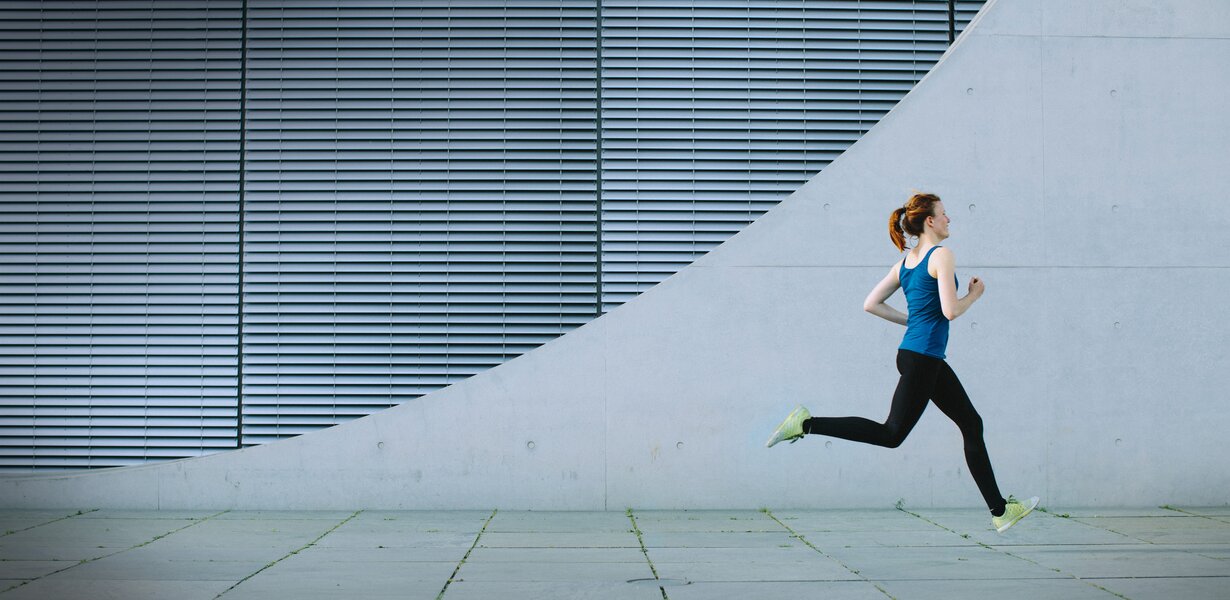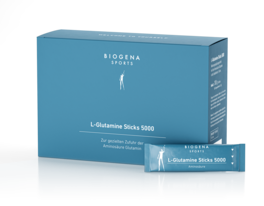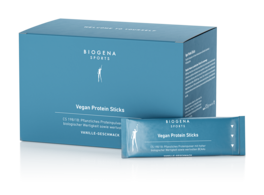Not even the biggest fans of exercise are immune from muscle aches and pains. When our muscles ache, we really notice it. They can just complain discreetly in the background or make every movement significantly more difficult. The good news: Muscle soreness has nothing to do with illness. Although we might ache all over our body, this is not the same as flu-like aching muscles.
What is muscle soreness?
The answer to this question has changed in recent years. For a long time, it was thought that muscle soreness was related to lactic acid. During intensive training when your pulse races, lactate, the sodium salt of lactic acid, is released. Previously, it was assumed that the muscles were no longer able to break down the lactate quickly enough, which caused pain. Today, however, it is known that the pain that is caused by muscle soreness is due to something else. Unfamiliar movements or strain cause tiny cracks in the muscle fibres – which we feel as muscle soreness.
How do sore muslces develop? The causes:
If the muscles are overloaded by intensive exercise, or if you perform unusual, new movements, pain sets in a few hours after exertion. The body then tries to repair these tiny cracks in the muscle fibres itself, so-called microtraumas, by flushing out inflammatory substances that subsequently come into contact with the outer nerve cells. Only then do we feel the pain, because there are no pain receptors in the muscle fibres themselves. However, because the flushing of the inflammatory substances starts between 12 and 24 hours after exertion, we only become fully aware of muscle soreness the next day or the day after. This explanation also refutes the old lactate hypothesis, because lactate has a half-life of only 20 minutes.
Are sore muscles good?
There’s no clear answer to this question. In order to provoke muscle growth, intensive stimuli are needed. Training only in the feel-good area and without great effort is not sufficient. Muscle soreness that is easily noticeable can be a sign that the stress was sufficiently high. However, if you have pain for several days, the stress was definitely too high. If you have to take a longer training break, you will also lose more than you win.
What it feels like
The regions most affected are the thigh and calf muscles. You feel a burning pain when you move or stretch these muscle parts. It can feel as if you are pulling every single muscle fibre. Most of the time, the pain continues to build up and often only peaks on the third day after exercise. The muscles then feel weak, sensitive to pressure, hard and stiff.
Sore muscles or a strain?
Athletes are often also faced with this question: Do I simply have sore muscles that the body can cope with in a short time or do I have a strain that requires more care to avoid causing major damage. The most significant difference: The symptoms of a strain occur immediately and manifest as a pull that increases slowly but steadily. For example, after an excessively long step, rapid sprints, stops or changes in direction or exerting too much effort, whereas the pain in sore muscles occurs only after a longer period of time, usually the day after.
If you have strained a muscle, it is important to take a break from any sporting activity to prevent tearing the muscle fibre.
What helps with sore muscles? You can do this to relieve it
Stretching
is the most common and simplest remedy for the pain caused by sore muscles. But be careful: Intensive stretching exercises can exacerbate the fine microtraumas and thus cause more harm than help. In turn, gentle stretching can help stimulate and accelerate the new development of muscle structures.
Magnesium for sore muscles
Taking magnesium preparations is also helpful. A double-blind study from 2022 concluded that after muscle overload after strength training, subjects were able to significantly reduce the symptoms of muscle soreness through an intake of magnesium.
Glutamine
Not only is the amino acid important for the immune system and the intestines, it also has an anti-inflammatory effect and supports the production proteins for muscle tissue. Therefore, it is also used for trauma, such as muscle soreness, because the body’s need for glutamine is then increased.
Quercetin
The antioxidant quercetin has been shown to have positive physiological effects. Taking the supplement can thus alleviate the development of muscle soreness. A study with triathletes also shows that muscle pain was perceived as less severe after running training when quercetin was taken at the correct dose.
BCAA
Branched chain amino acids (BCAA) are amino acids that help regeneration after intense training. Because they are not broken down in the liver, but directly in the muscle groups, they have a special effect on the muscle energy supply.
Protein powder
Protein plays an important role in regeneration. It’s not for nothing that protein powder can often be used as a “recovery shake” – since proteins promote recovery and therefore also have a positive effect on the healing process in the case of muscle soreness.
How long does muscle soreness last?
In most cases, muscle soreness disappears after a few days. Usually, the symptoms are at their peak on the second day after exertion and subside completely two days later. However, in the case of particularly severe exercise, the symptoms can also extend over a period of one week to ten days.
How can you prevent muscle soreness?
Regular exercise is a good prophylaxis against microtrauma. Movements that we are used to are easier for our muscles to deal with. However, warming up is very important in every case. Whether you’re running, cycling, playing football or strength training: before you start, the muscles that you will be using in particular should be brought gently to operating temperature. And even if the connection between warming up and muscle soreness is not completely clear, warming up helps prevent strains and muscle fibre tears. Both are injuries that are significantly more painful and protracted than muscle soreness.
Workout with sore muscles: Yes or no?
Here too, the answer is clear. Pain is a sign of the body taking a break. The body can heal the sore muscles itself, but it takes time to do so. Exercising the affected, painful muscles is not useful – this risks major injuries. Breaks make sense in order to increase performance. Because the muscle grows during regeneration and is then more powerful than before. In addition, no meaningful training is possible with painful muscles.
However, you can still exercise – just avoid the areas affected by muscle soreness. For example, if you have muscle soreness in your legs, you can try light weight training. Gentle endurance sports such as swimming, walking or moderate running have also proven effective. It is also not sensible to completely refrain from exercise, because exercise stimulates the blood circulation and therefore regeneration.
Frequently asked questions about muscle soreness
Mild muscle soreness can be an indicator of a positive exercise effect and is certainly not harmful. However, very severe muscle soreness is not a good sign, as it causes tiny cracks in the muscle fibres. Severe muscle soreness requires a prolonged training break, which in turn leads to a negative training effect.
Mild movement that promotes blood flow and the intake of magnesium preparations. BCAA, glutamine, quercetin and protein powder can also support regeneration and thus promote the healing process in sore muscles.
In general, the pain is at its peak two days after exertion and then gone again two days afterwards. However, intense muscle soreness can also take up to ten days to completely disappear.













